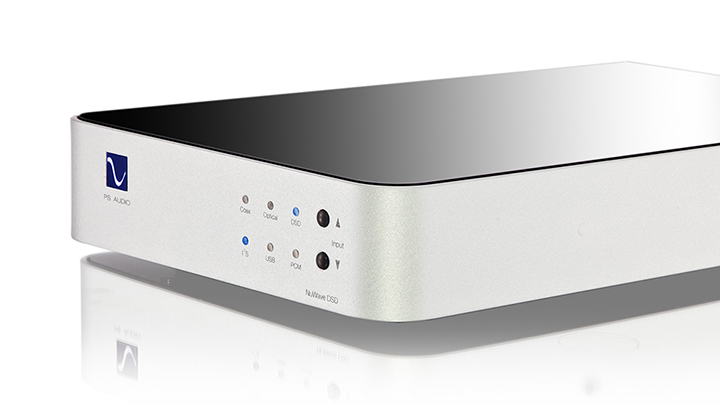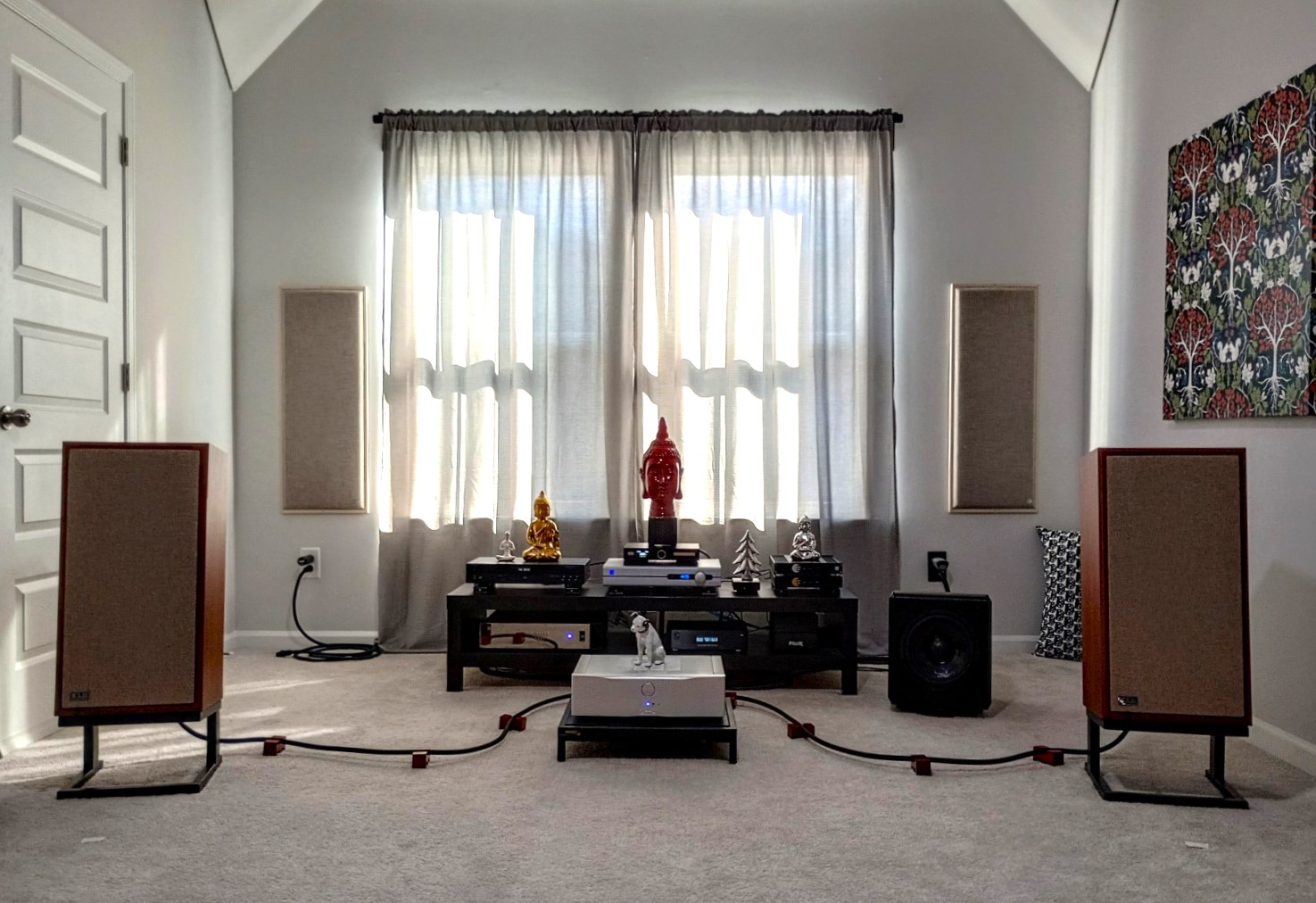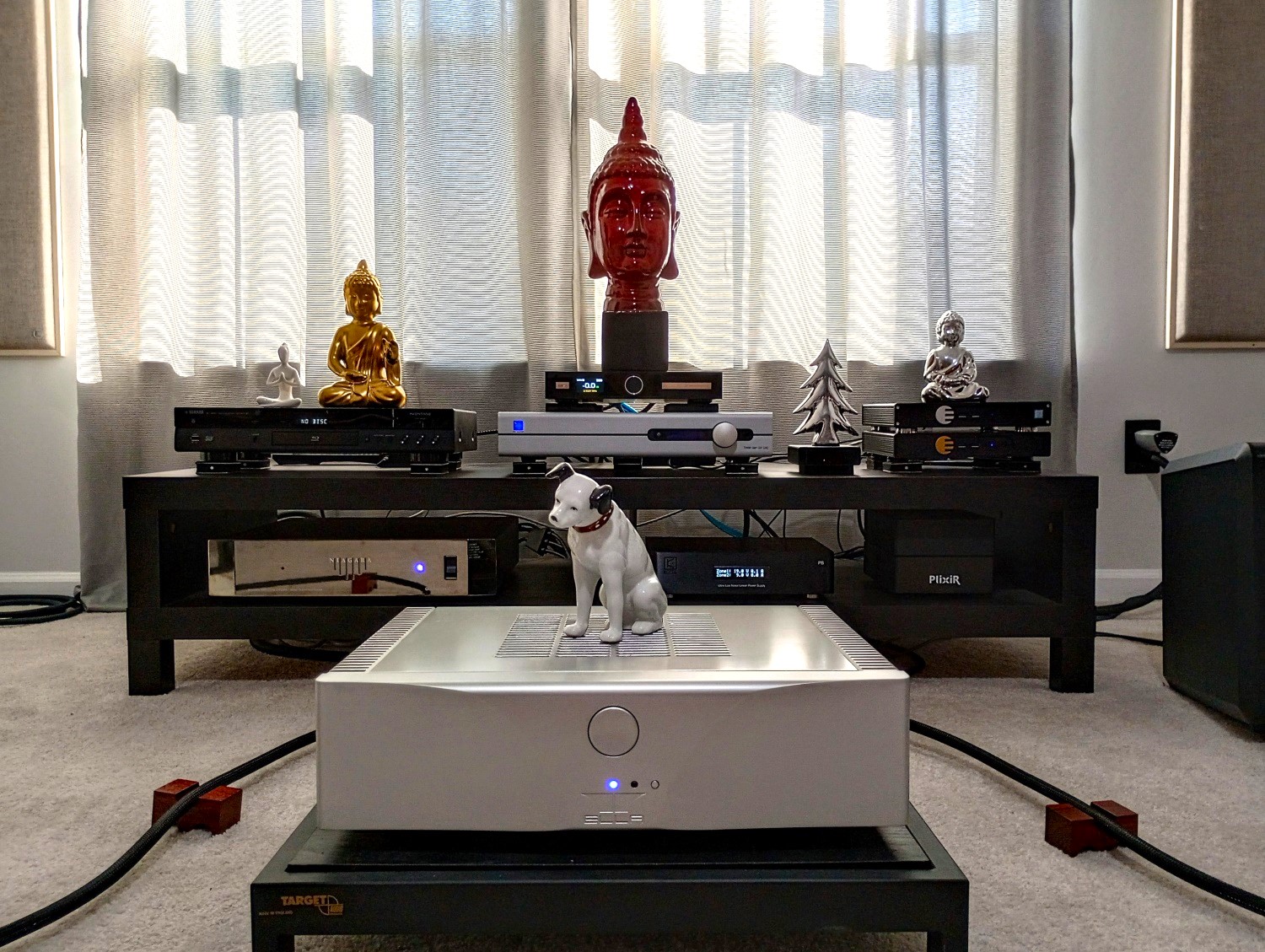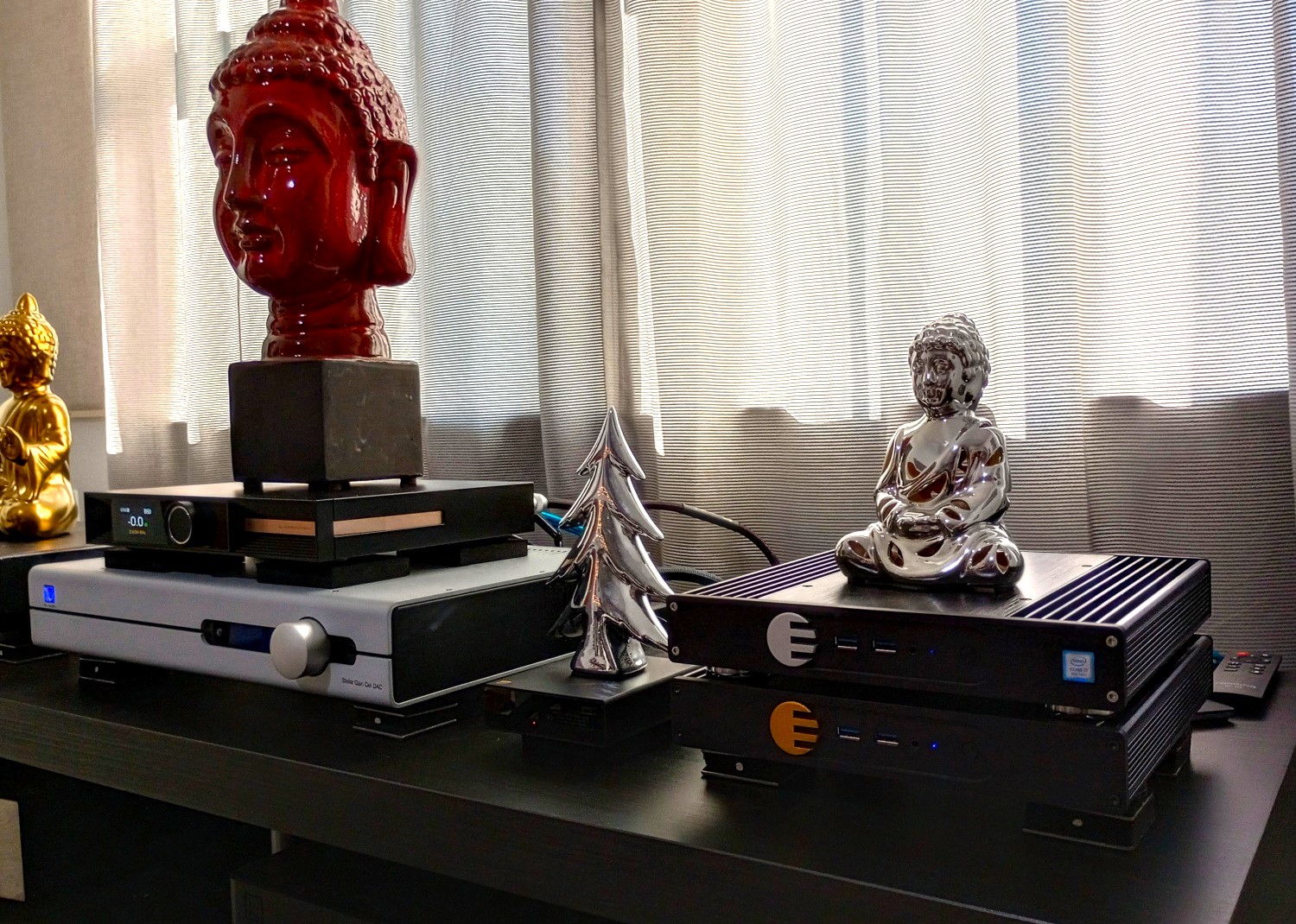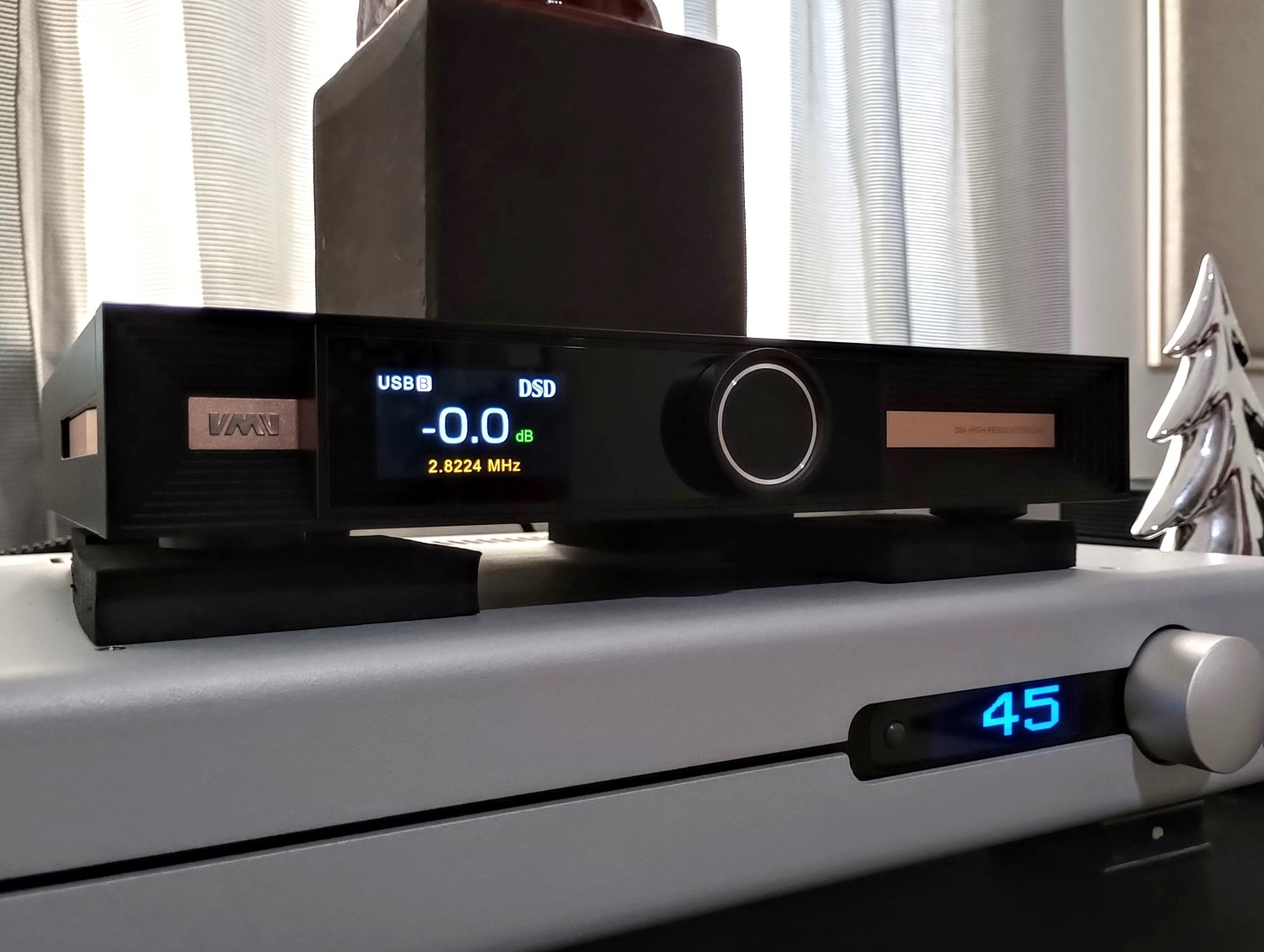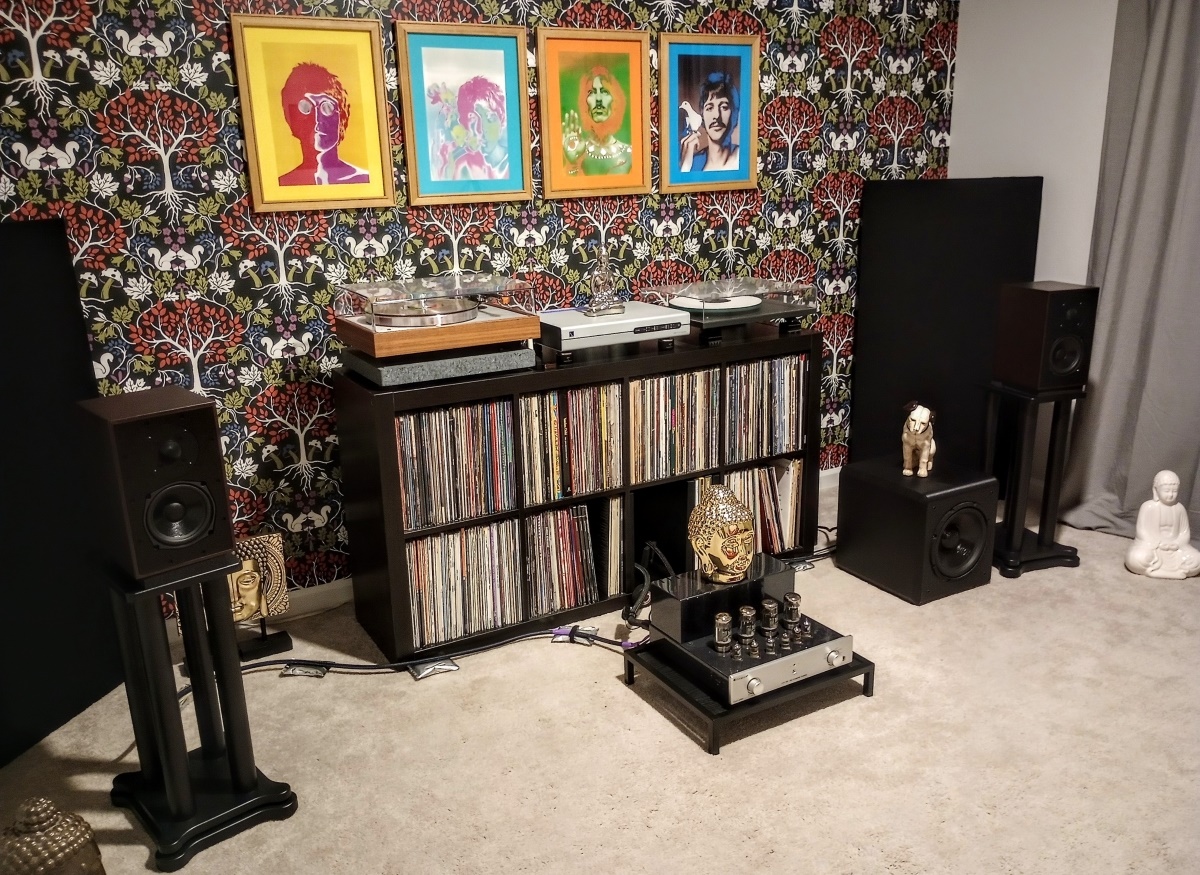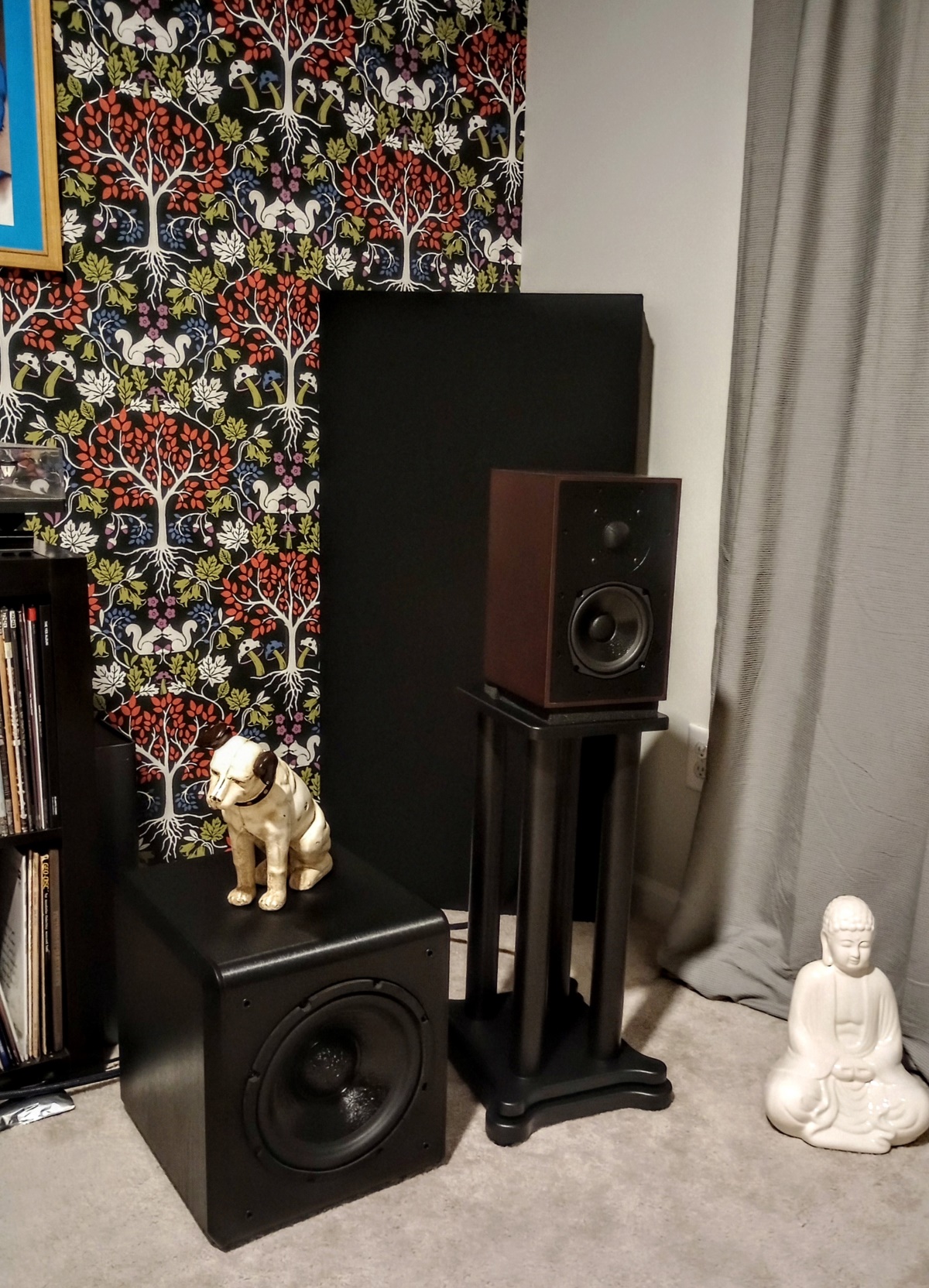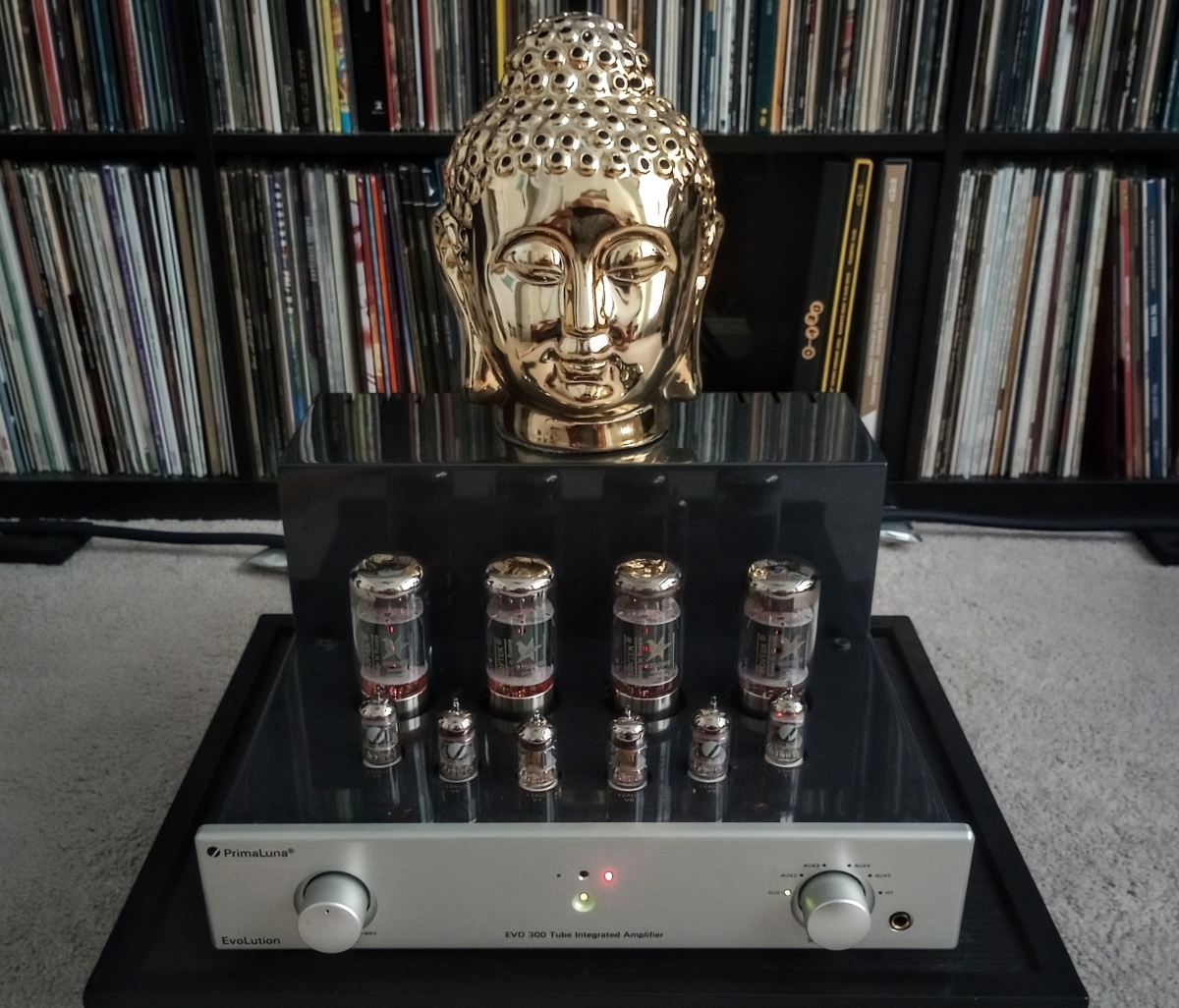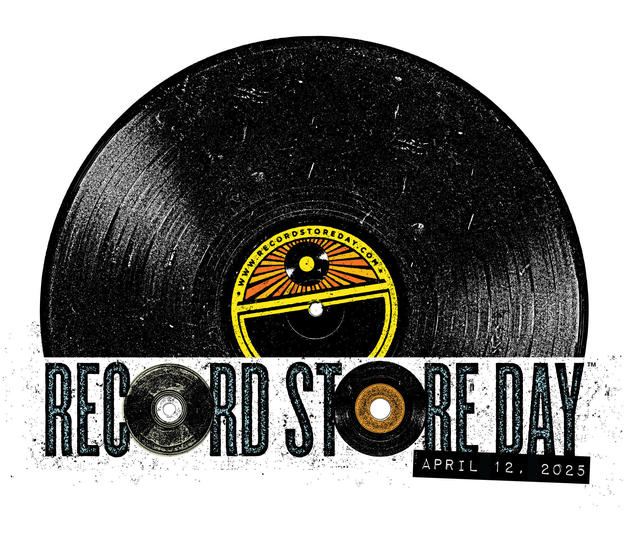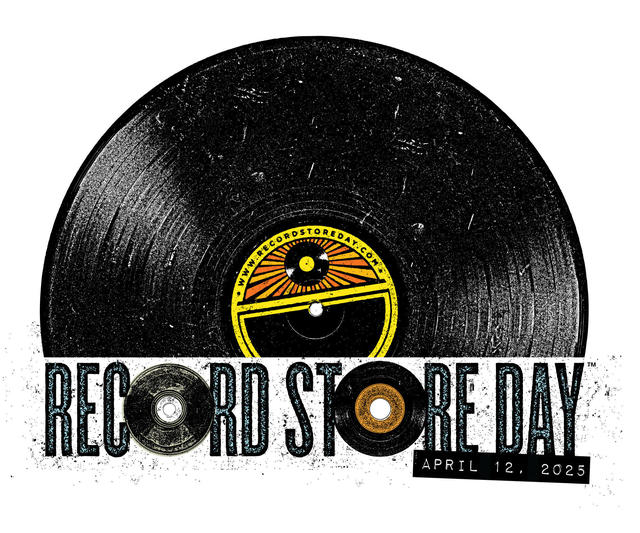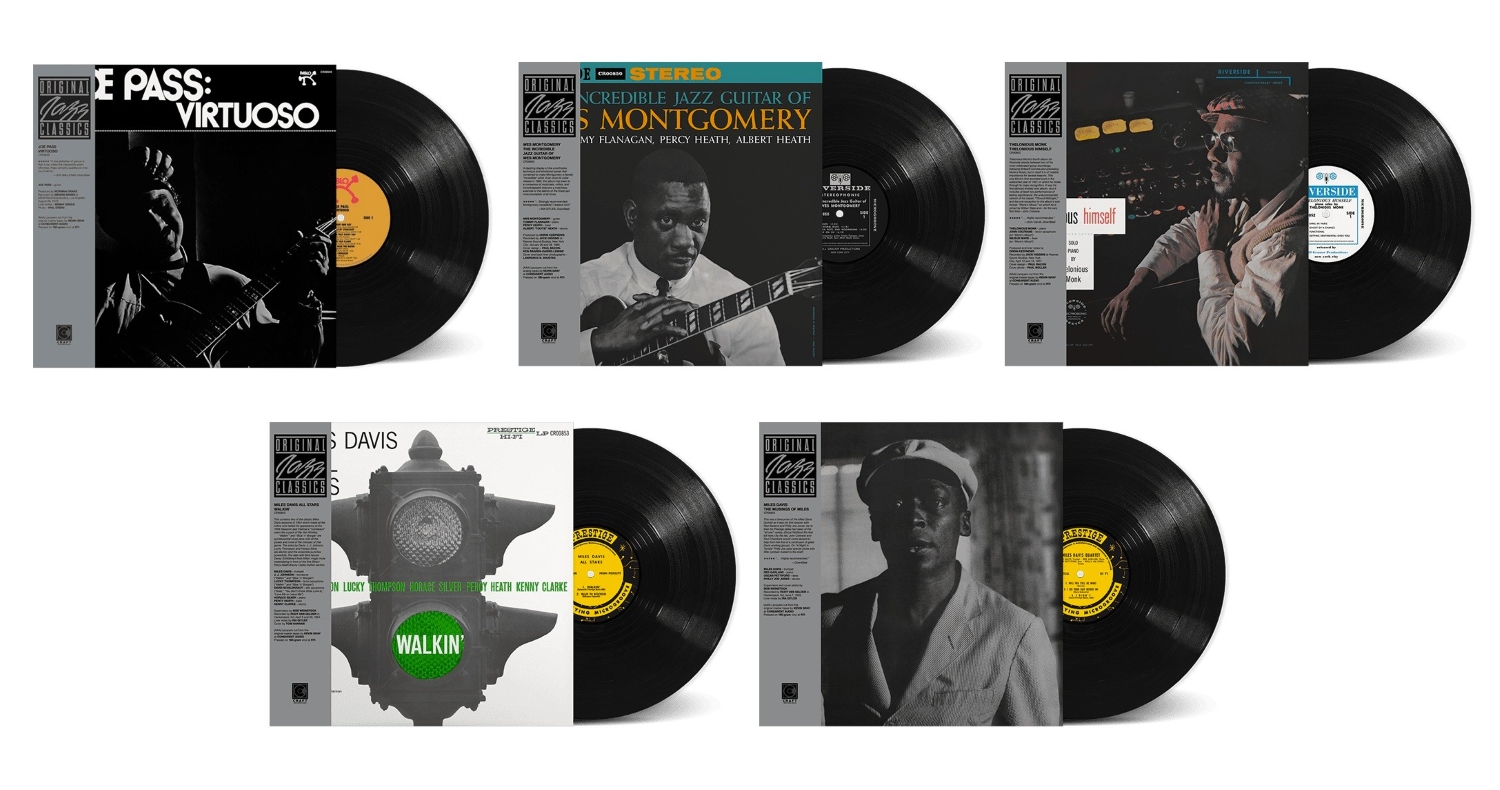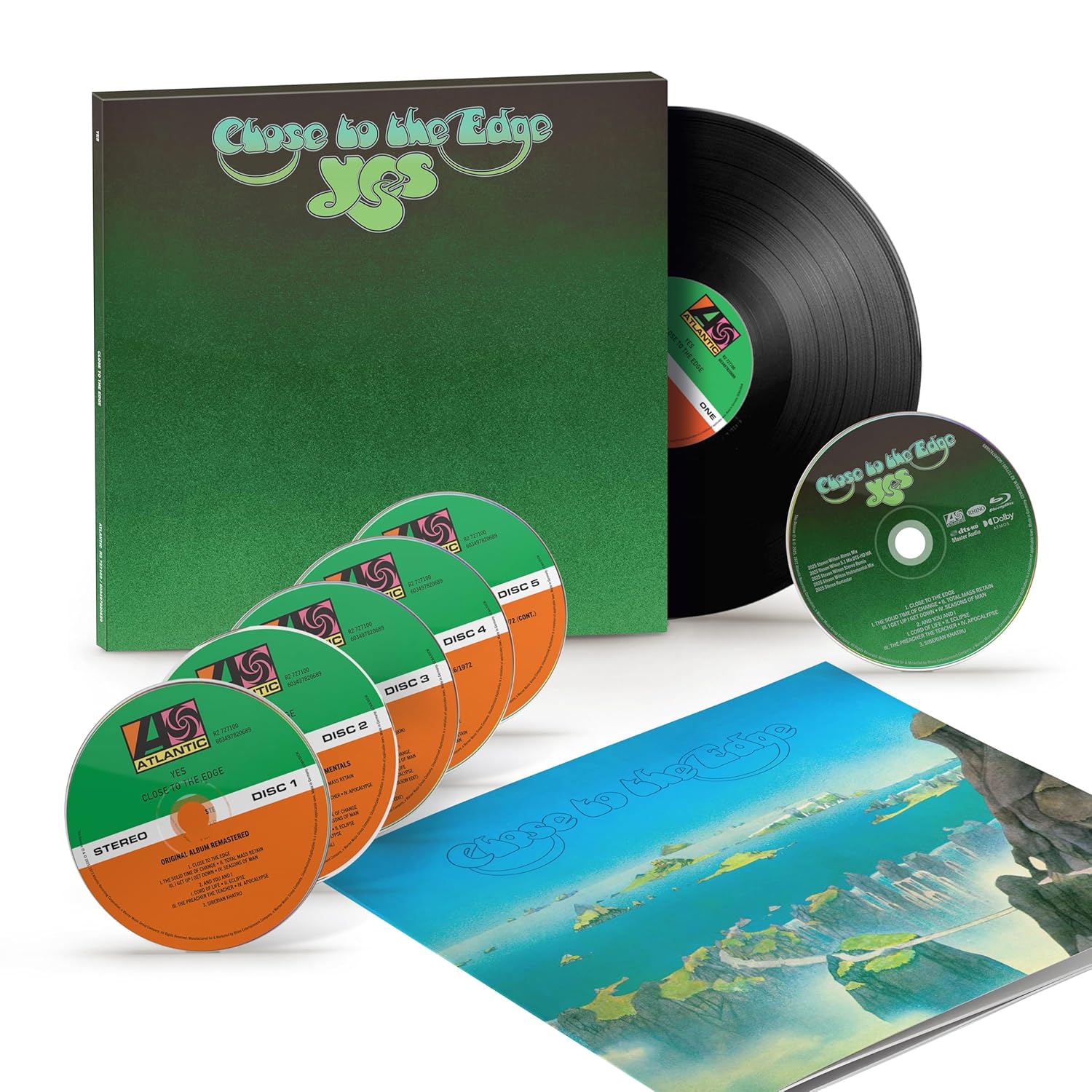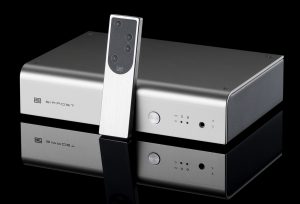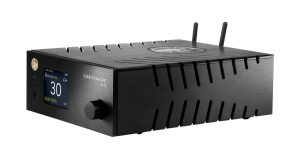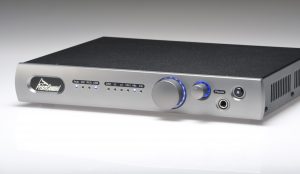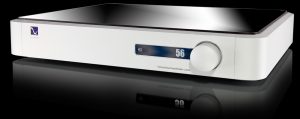When you're basically just maintaining the middle-of-the-road audio status quo, it's really very easy to get caught up in allowing yourself to become relatively pacified by garden-variety, substandard fidelity that's essentially just masquerading as an acceptable version of the absolute sound. And regardless of how relatively refined your hearing is with regard to what is and is not superlative sound, or rather perhaps, how well you might have managed the self-deceit of being convinced that you know the difference—spending time in the presence of truly exceptional sound is always a revelation. The key to your continued enlightenment is whether or not that revelation still holds true when you're forced to return to maintaining the status quo, or whether you choose to step up the level of self-deceit. Unfortunately, I must be honest: I have been fooling myself.
The last few months has been a period of genuine awakening for me in terms of tweaking my home system's ability to increase my suspension of disbelief while listening to music from digital sources, especially from computer-based audio. JRiver Media Center 21 was released in August; I think that they've improved its overall transparency and sound quality as a music player substantially, and it's now become my go-to player for digital audio sources. And in terms of obtaining a deeper, blacker, quieter background, the addition of a pair of AudioQuest JitterBugs and the Fidelizer 6.9 software suite were paramount to improving the music's fidelity. By reducing the levels of EMI and RFI introduced by my computer's USB outputs, and also by optimizing core audio performance and minimizing background processes, the improvements made to the listening experience are staggeringly good. I would never have believed that an under $200 total investment could yield such remarkably magical and musical results.
I've also added an outboard pair of Heil AMT supertweeters to my Zu Audio Omens that have given the Zus a little added midrange presence and treble sparkle—I've always been fascinated by the Heils, and my first pair of speakers that had any kind of real high-end pretensions included them. Why, years ago, I got rid of them, I'm not really sure—I've been questioning that decision for decades. But now that the patents for the Heil driver have expired, they're turning up just about everywhere, and I was able to get a pair from Madisound for less than $100. They're made in China, but with very robust construction, and they really do take me back to a much simpler time. I still can't get over the incredible sound and how it matches my memory of the experience perfectly—an upcoming article in PF will discuss living with them in greater detail.
But without any doubt, the single most important addition to my system of the last few months—or maybe forever—is the inclusion of the PS Audio NuWave DSD DAC. While similar in appearance to the original NuWave DAC, that's pretty much where the resemblance ends. There's no simple addition here of DSD capability to an already good machine—it appears to have been essentially rebuilt from the ground up, with the intent of offering a serious dose of trickle-down technology from its pricier sibling, the DirectStream DAC. Having no prior experience with PS Audio gear—aside from their enduring good reputation—I was absolutely stunned by the size and heft of the package when handed to me by the FedEx delivery guy. I just wasn't expecting it to be so big—or heavy—or pretty! Every aspect of the unit's appearance and build exudes exceptional quality and craftsmanship.
The NuWave DSD is a fully asynchronous DAC; the back panel sports a full complement of digital inputs, including coaxial, optical and USB, as well as an I2S input (in HDMI form). All of the inputs will accept a PCM signal up to 24 bit/192 kHz with the exception of the optical input, which is limited to 96kHz. Single or Double Rate DSD can be input via the USB or I2S inputs, and all input signals are taken into the NuWave DSD with no Sample Rate Conversion. The input is built around a simplified FPGA (Field Programmable Gate Array) known as a CPLD (Complex Programmable Logic Device); it discerns the sample rate and format of the source data, reclocks the signal and reduces jitter, then sends the wave-shaped data to the DAC chip. I don't profess to possess any real level of understanding of this, but the FPGA is a very complex integrated circuit that allows the designer to perform on-the-fly (hence, Field Programmable) changes to the process that wouldn't be possible with just basic digital-to-analog conversion. A full-tilt FPGA is employed in PS Audio's flagship DAC, and it controls every aspect of the DirectStream's operation.
Of course, with a true FPGA, constant updates are possible to the system—we've seen this with the regular stream of improvements that PS Audio has done to the DirectStream. Those type of constant updates are not possible with the NuWave DSD; it's been designed to provide the best sound possible at its price point, which, again, is less than one-quarter that of the flagship unit. I've seen a lot of negative comments around the web concerning the number of updates already done to the DirectStream in such a relatively short period, and they all seem to complain that the unit was obviously brought to market as a half-baked product. I don't really think they're seeing the incredible beauty and flexibility of the design's architecture.
With the NuWave DSD, high-speed, low gate-count logic is utilized to reduce propagation delay and increase throughput speed. The DAC chipset is the highly acclaimed ESS Sabre Hyperstream architecture, whose output is then passively filtered to reduce transient distortion. PS Audio firmly believes that passive filtering results in a more musical output and has a less detrimental impact on the resultant sound when compared to an active filter. My listening experiences of the last couple of months totally bear this out.
The unit's internal power supply (which alone probably weighs about ten times as much as my current DAC, the HRT Streamer HD) includes a massive toroidal transformer with seven regulators, high-speed switching diodes and a serious storage capacitance complement of 15,000 mFd. The weight of the transformer contributes significantly to the 20-plus-pound heft of the NuWave DSD, compared to a mere 12 pounds for the original NuWave (in what is essentially the same case and form factor). The fact that this unit has a substantial on board power supply is of particular interest to me—it'll be the first DAC I've had here for review that doesn't derive its' power from the USB bus, and I'm really curious how and if this will affect my impression of the unit.
The output stage is pure Class A, with fully balanced and single-ended outputs; PS Audio highly recommends taking advantage of the balanced outputs if possible. Virtually all of my listening was done through the balanced outputs, although in my system, I have a 2nd sub controlled by an additional single-ended preamp, and the constantly active single-ended outputs on the NuWave DSD provided the perfect signal for that purpose. Fully discrete semiconductors and ICs are employed throughout, giving the unit an extended bandwidth that reaches to an impressive -3dB down point of 60kHz. And of course, the unit is fully constructed in the USA at their Boulder, Colorado facility.
I was deeply involved in two other in-progress reviews when the NuWave DSD showed up, so I basically inserted it into my system, powered it on and played some background music for a week as a semi-break-in process for the unit. The very first thing that I really noticed when sitting down to do some serious listening was that the NuWave DSD had a very lively, engaging sound that just begged me to spend extended periods with the DAC, revisiting many of my old favorites and some new acquisitions too. Not ever having had a DSD-capable unit in my system, I thought might be prudent to acquire at least a few DSD music files to have on hand for evaluation of the unit's DSD playback and capabilities, and I also thought it might be a good idea to have the ability to compare and contrast those DSD files with other high-res PCM files I happened to have access to. My PayPal account had a little over $100 that had been sitting there for some time, so I used that cash to by a handful of titles from both Super HiRez and HDTT.
But prior to immersing myself in the glories of DSD, I thought it prudent to fully check out how the NuWave DSD handled my vast collection of Red Book CD rips. And here's part of the rub: there's a whole lot of discussion out there as to whether DSD is even necessary. Take a look at how the whole SACD experience unfolded, which unfortunately for many (myself included), didn't really have the happy ending for DSD-based technology we might have hoped for. And I really can't help but think that Sony bears the brunt of the blame for that—for all practical purposes—overwhelming marketing failure. Because they were insistent on their licensing requirements and reluctance to share proprietary playback hardware without a hefty price tag, they essentially killed the format for manufacturers and consumers as well. Yes, SACD still exists as a niche market, but basically only for boutique labels and higher-end manufacturers.
Is DSD even necessary? While a handful of sub-$500 DSD units have appeared recently, many audiophiles who have embraced computer audio are still basically existing in a predominantly PCM-based universe. Take away the one-percenters, and that probably leaves a pretty substantial PCM-based majority. I just read a Facebook exchange where even a relative luminary like Steve Guttenberg questioned the need or usefulness of DSD's existence. The selection of available DSD files seems pretty limited when compared to the seeming glut of high-res PCM that's available, and very little aside from jazz or classical music seems to be appearing as native DSD recordings. And in terms of identifying the provenance of high-resolution audio files, there's a noted lack of transparency when attempting to discern the origin of many files sold as "high-res". Many listeners comparing the sound of high-res files often consider the 16/44.1 files to sound as good or sometimes better than a file sold as high resolution. I tend to fall pretty much into that camp, although I'm also convinced that hi-res done well is definitely a good thing.
I've listened to literally hundreds upon hundreds of PCM-based files via the NuWave DSD in the last couple of months, and these run the gamut from 16/44.1 to 24/96 and even 24/192. I could recount instance upon instance of playback—especially via 16/44.1 sources—where the sound quality exceeded my expectations by such a large measure, it literally defied belief. Listening to music via this unit is totally addictive—I'm totally sleep depraved! But the best is yet to come...
Moving into the DSD arena, first up were a couple of titles that I've long been enamored with, Rachmaninoff's Symphonic Dances and Respighi's Belkis, Queen of Sheba, both with Eiji Oue and the Minnesota Orchestra on the Reference Recordings label, and via Super HiRez as 1xDSD. Comparison would be between 24-bit/44.1 kHz rips from the CDs, and also the 24-bit/176 kHz versions as available to me via the Classics Online HD streaming service. Because of their bit-rate values, it's pretty clear to me that the Classics Online versions were sourced from the Reference SACD versions, so that would entail a conversion from 24-bit PCM to DSD for the SACDs, reconverted to PCM for the streaming version. A whole lot of conversion going on here!
A note about DSD playback: being essentially a DSD neophyte, the minute that I made the mental connection that the I2S input was an HDMI port, I of course assumed that I'd be able to stream pure DSD from my Sony BluRay player via HDMI. This was going to be freakin' great, because I've got a boatload of SACDs, and at last I'd be able to hear them output through a really excellent DAC instead of the somewhat questionable Sony. Immediate failure force me to dig deeper (translation: read the manual), and of course, to my dismay (though not unexpectedly), streaming DSD isn't possible because of copyright restrictions. A disappointment, of course, but a relatively minor one, as there are only apparently a few DSD-capable transports and DACs that have the sufficient copyright clearances to do so. DSD output in the NuWave DSD is only possible by DoP, which requires a DSD via DoP-capable music player, like JRiver Media Center, for example.
I follow Michael Lavorgna's AudioStream blog pretty closely, and there was a pretty interesting exchange recently involving DSD via DoP. Of course there are diverging opinions over whether the technology is completely transparent as far as music reproduction goes, and there were some especially interesting comments from Gordon Rankin, whose design work for Benchmark and AudioQuest is very highly respected. I utilize both the Dragonfly DAC and a pair of Jitterbugs, and far be it from me to question his views on the subject, but he seemed to be of the opinion that DSD via DoP isn't giving us the complete picture musically. There's a pretty in-depth technical explanation of the process in the NuWave DSD manual, and my listening so far (at least, to my ears) bears out PS Audio's feeling that the process is completely transparent with no ill effects on the DSD conversion or resultant musical output.
Back to the music: both Reference titles sound pretty amazing played back through JRMC 21. This is a not really tough call at all, the DSD files win hands down. I was really amazed at how the DSD files just sounded like an amazingly good LP with no surface noise and astonishingly good dynamic range. The overall feel of the presentation was every bit as good—if not better—than listening to an SACD, and to restate the obvious, I feel much more secure in the knowledge that the ESS Sabre DAC chip inside the PS Audio unit is definitely doing a superior job compared to playback via the Sony. Now I don't have the SACD of either of these titles, but for comparison listening I first took a stroll through the 24-bit rips from the CDs. My current ripping software, dBpoweramp, has a built-in plugin that will allow you to rip HDCD disks as the actual 24-bit originals, and although it's been proven that much that's labeled as HDCD is very suspect, I have every confidence that the Reference CDs are the real deal. And in terms of Red Book playback, they sound very respectable when compared to the DSD files, but overall, fall well short of the dynamics and musicality of the DSD files.
The 24/176 files of the Reference titles via Classics Online HD sound surprisingly good via the streaming service—I just reviewed the service for PF, and I must admit, I'm very impressed with the overall ease of use and quality of sound. I really didn't expect that streaming of relatively large hi-res audio files would give the kind of superlative results that I've been able to get from Classics Online. And the sound quality is very, very close to the DSD files—I'm pretty certain that they're sourced from the same original transfer. But I really have to give the edge to the DSD here, it just seemed to me that the playback was the slightest bit more effortless than with the 24/176 PCM transfer.
Having listened to a ridiculous number of PCM and a fair sampling of DSD files, I felt that I pretty much knew everything I needed to know to proceed with my assessment and evaluation of the NuWave DSD. To repeat myself ad nauseum, this is an incredibly sweet DAC, and while I have limited experience with the upper echelon of digital-to-analog conversion, I just don't see how, especially at this price point, it could possibly get much better. That said, I pulled the NuWave DSD out of my system and re-inserted the HRT Streamer HD and listened intently to 16/44.1 files for about six hours. It sounded pretty good, maybe even better than I was planning on giving it credit for. After all, this is where I'll probably be returning at the conclusion of this experience, right? At this point, I disconnected the HRT and re-inserted the NuWave DSD, listening critically to CD-quality files for about another four hours. To my total dismay, I immediately realized that there could be no going back. The sounds I was hearing from my HRT unit, in comparison, were so colorless, so bloodless, so very plain vanilla. It's really, really shocking to me that I've been obliviously missing so very much for so long.
Now here's where things get a bit murky: a bit of web searching brought me to a page where the author had been experimenting with using JRMC to convert all their Red Book PCM files to DSD via DoP. I didn't really realize that this was even possible. So, of course, I took a stab, and while it took me the better part of several hours to find the correct buffering setting for the conversion, I've been listening to every Red Book file I own via DoP since. You know what—and I know this sounds utterly absurd—but the 24/44.1 Reference files played back converted to DSD sound pretty shockingly good. So good, in fact, that it can be a bit challenging to discern really serious differences between the converted Red Book files and the downloaded DSD version. The larger sibling of the NuWave DSD in PS Audio's lineup, the DirectStream DAC, converts everything to DSD—maybe they're onto something here! While I'm pretty sure the technology employed by JRMC doesn't come close to that employed by PS Audio in their flagship DAC, I have to admit—I've been pretty gobsmacked by the results! Matt Ashland of JRiver Media Center had a hand in the initial creation of the DSD via DoP standard a few years ago, so it shouldn't come as too much of a surprise that they seem to be on the right track.
I've literally been racking my brain for really telling examples of files that would benefit from the conversion. I just listened to a 16/44.1 rip of Julie London's classic Around Midnight, which has never really wowed me in PCM playback. Converted to 2xDSD, Julie's voice sounds so much better, so nuanced, with such incredible texture and warmth—I don't own the LP, but it sounds like what I imagine the MFSL version of the LP would! Anything from the classic period on the Blue Note label (50's to 60's) also seems to gain significantly in clarity and overall musicality. Another example: my well-traveled MFSL mid-seventies pressing of John Klemmer's Touch, which has long been my reference for spine-tingling, ear-tickling percussion. It has now been displaced by a 16/44.1 lossless rip of the budget-priced CD, converted to 2xDSD via JRiver Media Center 21 and played through the NuWave DSD. Yes, it's tantamount to heresy, I know, but the resulting sound is that good!
Also, just for disclosure and clarity, I've only listened to 16-bit or 24-bit/44.1 PCM files from CD rips converted to DSD. Perhaps there's no reason for me to be squeamish, but I haven't taken the leap of faith to do what I feel is an unnecessary additional conversion of already higher-resolution PCM files. Time will tell!
When PS Audio released the DirectStream DAC, one of the aspects that got a tremendous amount of press was how well the unit handled Red Book CD sound, and most of the mainstream audio publications raved about the level of musicality and retrieval of detail it offered. And while the level of technology available at the price point of the DirectStream ($5999) is simply not possible for $1300, Paul McGowan of PS Audio has stated that he wanted to voice the NuWave DSD to display as much of that character as humanly possible. In terms of their design goals, it's a complete success. The flexibility to play native DSD and to convert PCM to DSD via a music player like JRiver Media Center makes it a compelling value for anyone looking for a reference-quality digital-to-analog converter. Is DSD even necessary? To answer my own question, yes—especially in the implementation seen here with the NuWave DSD. Having this unit has made one thing very clear to me—my DAC was without a doubt the weakest link in my system. The NuWave DSD is the complete package and a keeper—very highly recommended!
PS Audio NuWave DSD DAC
MSRP $1299
PS Audio
Images courtesy of PS Audio




